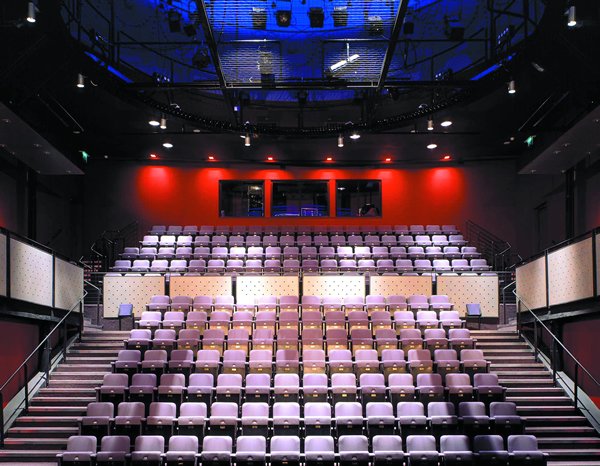The Building
The Tron has always been an eclectic place. Since a church was first built on the site in 1529, the eye-catching steeple of the Tron has marked both Catholic and Protestant churches, a place of execution, a meeting hall, a police station…and of course, one of Glasgow’s best-loved theatres! Find out more about the Tron’s fascinating history below.
Why ‘Tron’?
In Glasgow, the name ‘Trongate’ first appeared around 1560. It referred to the “tron”– the beam with which trading goods were officially weighed when they entered the city walls. For the next three hundred years, this area came to be at the heart of the city’s mercantile and financial activity– hence Merchant City.
A church was originally built on the site now occupied by the Tron Theatre in 1529. The eye-catching blue-faced clock tower of this structure is still part of the modern Tron building, and one of Glasgow’s most recognizable landmarks.
The HellFire Club & The Dark Side of Glasgow
In 1793, Glasgow’s notorious Hellfire Club set the Tron building on fire (in an effort to see which members could–literally–stand the heat), destroying it save for the steeple, which was incorporated into a replacement structure by the architects, James and Robert Adam– still the basis for the Tron as it exists today.
Unfortunately, the destruction of the building was a portent of things to come. The Industrial Revolution of the 19th century did much to change the character of the East End and drove the more monied residents further West, carried by the ever-expanding rail network. In the East of the city, new forms of entertainment established themselves: drinking shops, free-and-easies, dance halls and penny theatre. Known as the ‘dark side of Glasgow’, a newspaper reported 200 ‘houses of ill fame’ in the area and the Leigh Kirk alone had 20 brothels within its close. The Britannia Panopticon opened nearby, along with a number of other music halls and wax works including the Metropole, once managed by Stan Laurel’s father.
Tron Re-born
For the next few centuries, the Tron fell into a period of disuse, until the formation of the Glasgow Theatre Club in the late 1970s. In 1980 the Club took over the building at a rent of £1 per annum, and after little more than a year the Tron Theatre was off to a flying start with a full programme of visiting companies and jazz in the bar on Sundays (a tradition we continue right up to the present day!) However, facilities were meagre and development continued side by side with the artistic programme: in 1982 the main auditorium was opened and in 1984 Faynia Williams was appointed the first Artistic Director of the Tron.
In 1992 the building was developed still further and again in 1995, thanks to European Regional Development Funding. Throughout this time, the Tron continued to establish itself as a powerhouse of new writing and dynamic productions. Leading artists to emerge from the Tron around this time included Maureen Beattie, Ewan Bremner, Peter Capaldi, Alan Cumming, Craig Ferguson, Forbes Masson, Peter Mullan, Eddi Reader, Siobhan Redmond and Elaine C Smith. The Tron became known not only for its theatre but also for its lively bar and restaurant which became a regular hangout for the Glasgow art world.
A Cultural Hub For a New Glasgow
In 1996, when Michael Boyd left to become Associate Director of the Royal Shakespeare Company, Irina Brown took over as the second Artistic Director of the Tron and, with the advent of the National Lottery Fund, staff set to work on a proposal to completely upgrade the Tron. In 1996, £5 million was awarded for the refurbishment and improvement of the entire building. The re-development project was funded by the Scottish Arts Council National Lottery Fund, Strathclyde European Partnership and Glasgow City Council. One year later, the Tron once more became a building site, with performances continuing in the Victorian Bar and, after December 1997, occasionally in the re-opened box office. The new Tron Bar on Chisholm Street opened in November 1998 and finally, in July 1999, building works were nearing completion and the Tron officially re-opened.
Now, the modern re-development brilliantly juxtaposes the historical elements of the Tron building with spectacular new spaces, including the Changing House studio theatre and the refurbished Tron Bar+Kitchen. The new building received the Glasgow Institute of Architect’s People’s Choice Award 1999, was shortlisted for the Regeneration of Scotland Award 1999, and was also awarded a commendation by the Civic Trust.
To read more about Tron’s history, DOWNLOAD OUR ONCE UPON A TRON HISTORY LEAFLET
